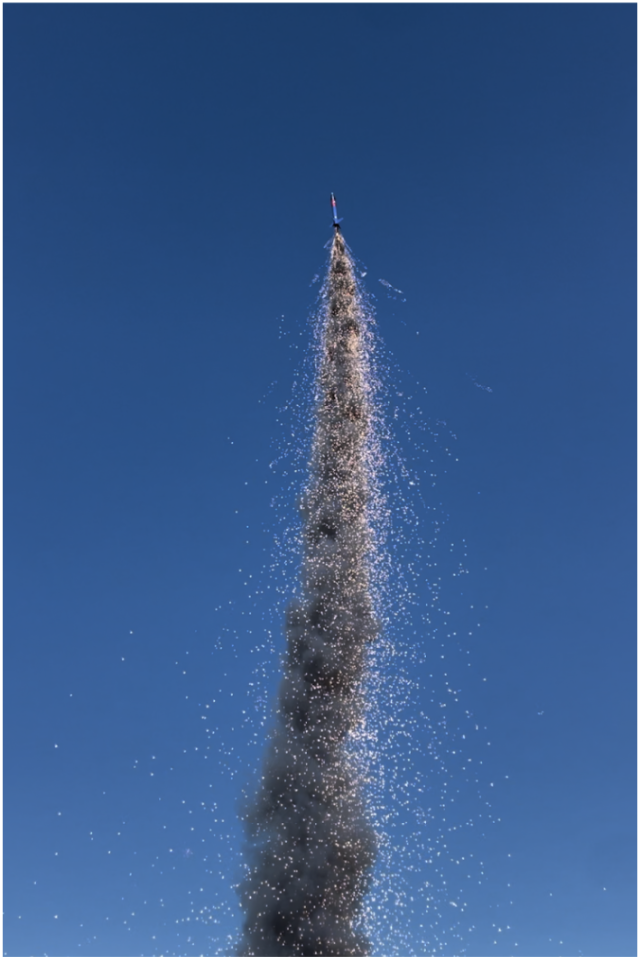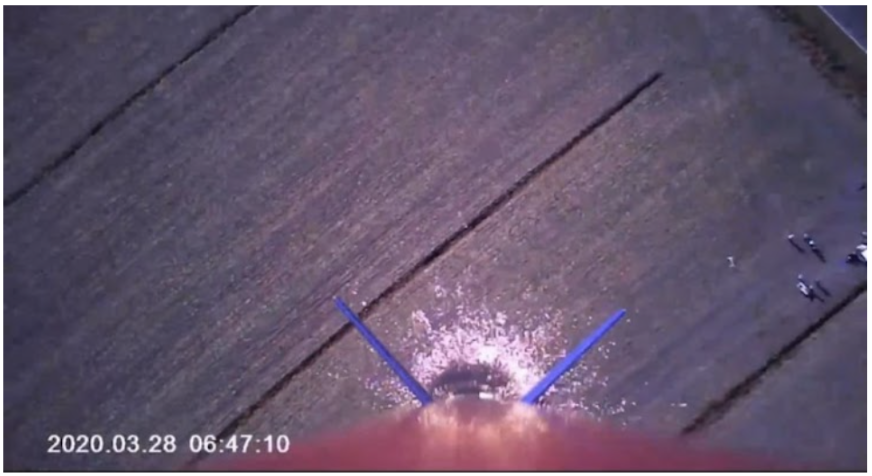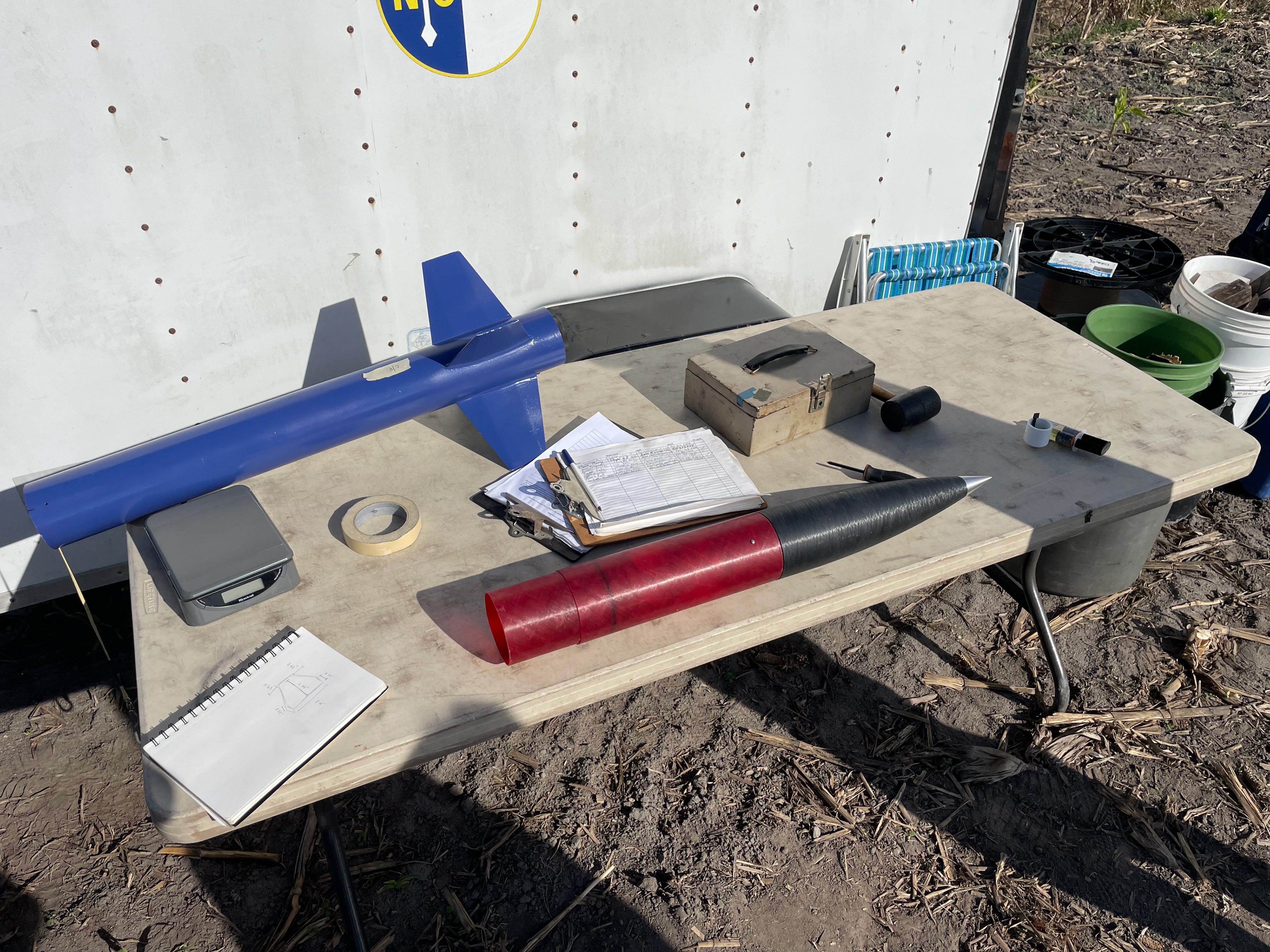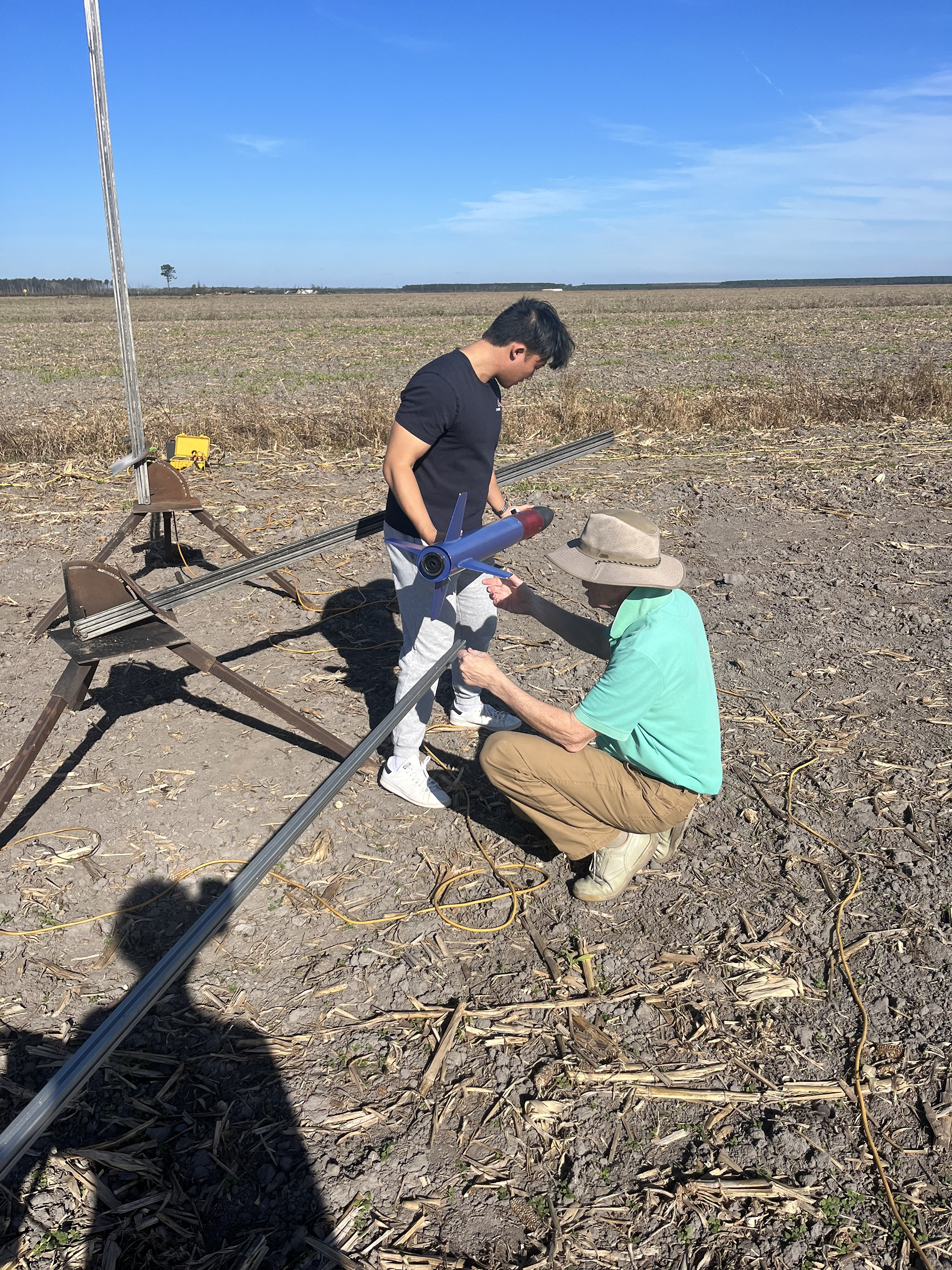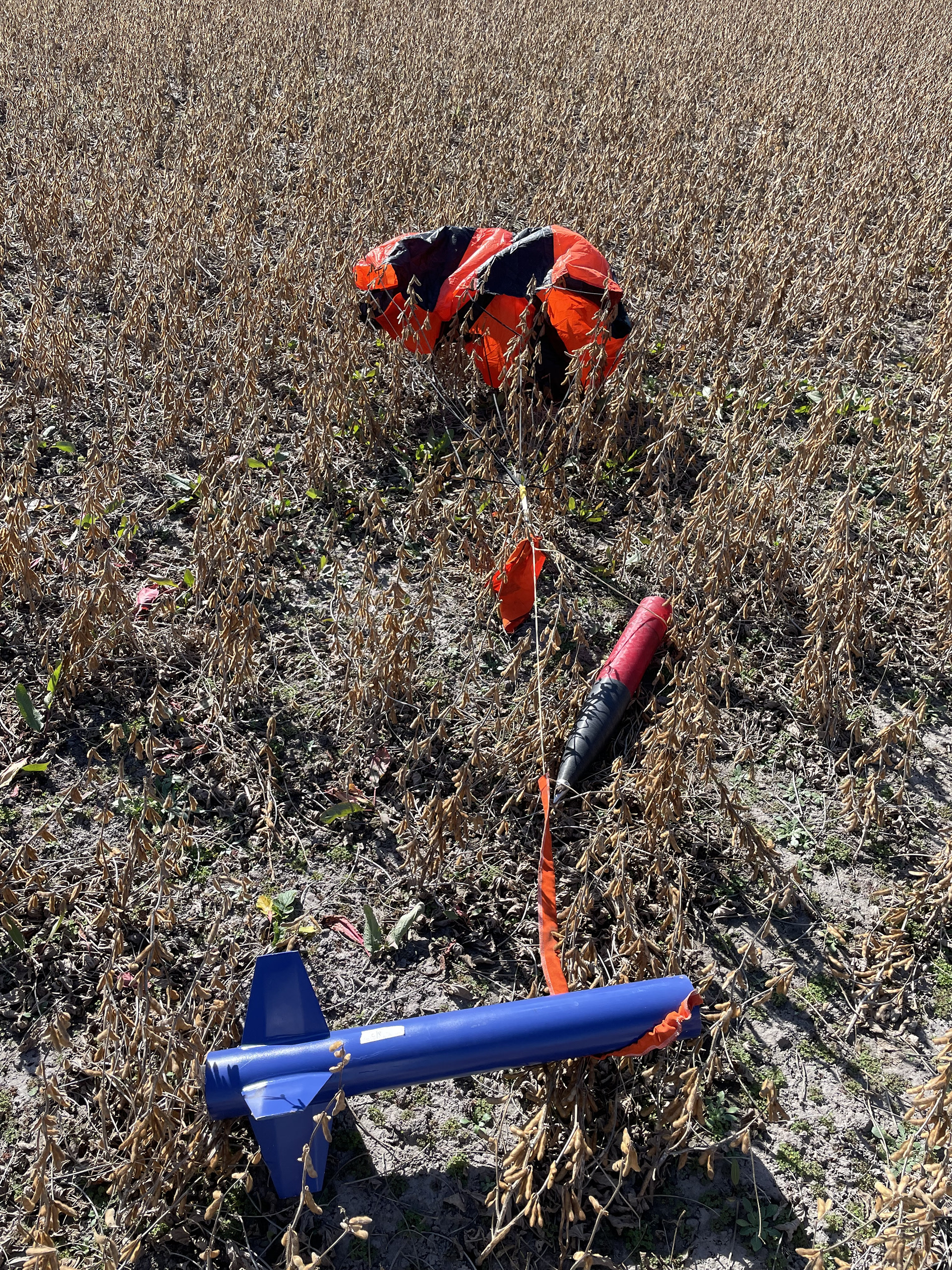Overview
I served as the Mechanical Engineering Team Lead for the Rocket Payload special design project. Our team of 5 was tasked with the design, manufacturing, and integration between an avionics system and the mechanical launch, separation, and recovery mechanisms, with the goal of collecting live data from the launch and comparing it to our predicted values.
Throughout this experience, some key skills I have demonstrated include:
•Standard electronics and programming for microcontrollers
•Effective project management for collaboration with interdisciplinary team
On November 18, 2023, the rocket was flown and recovered successfully, along with the experimental data. Scroll for launch footage!
Avionics System
Our assembly consisted of some of the following devices:
•BMP390 Precision Barometric Pressure and Altimeter Sensor
•EC Buying GY-521 MPU6050 3 Axis Accelerometer
•HiLetgo Micro SD TF Card Adapter Reader
•FUVISION Mini Camera
•COCONISE Audio Recorder
•Arduino Uno
•3D-Printed PLA Avionics Bay
The altimeter, accelerometer, and temperature sensor utilized an Arduino interface. For the pressure sensor, a Pitot tube apparatus was installed, with one hole drilled in the side of the fiberglass coupler while another was drilled through the vertical axis of the aluminum nose cone tip, measuring static and dynamic pressures in flight. All electronics utilized either internal batteries or external 9V's, and stored data to a micro SD card. All components were mounted to a 3D-printed custom avionics bay.
CAD and RockSim Modeling
After the forward airframe was modeled using CAD, the dimensions and specifications were put into RockSim to predict altitude, Mach number, and velocities. See images below (click on image for zoom).
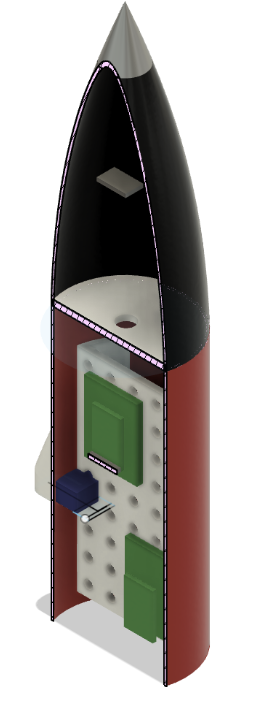
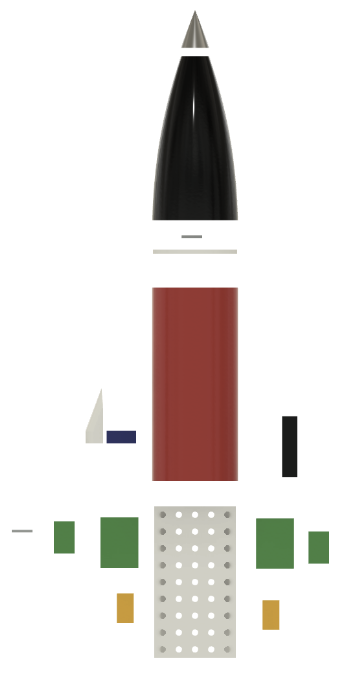
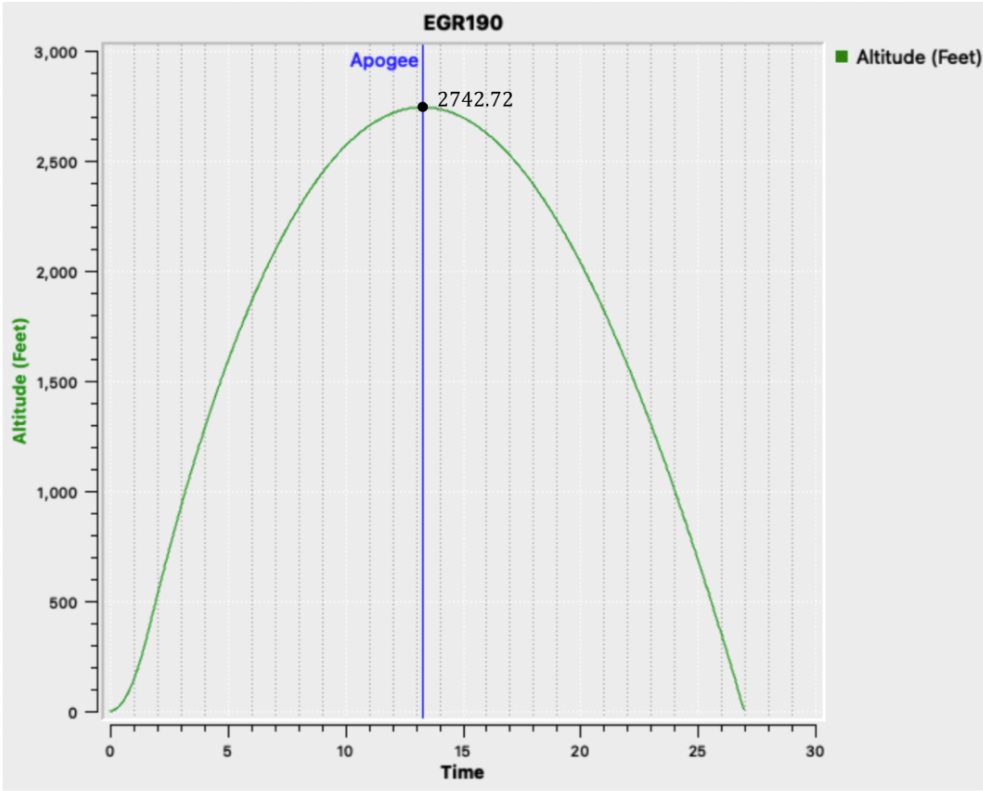
Altitude vs Time (RockSim)
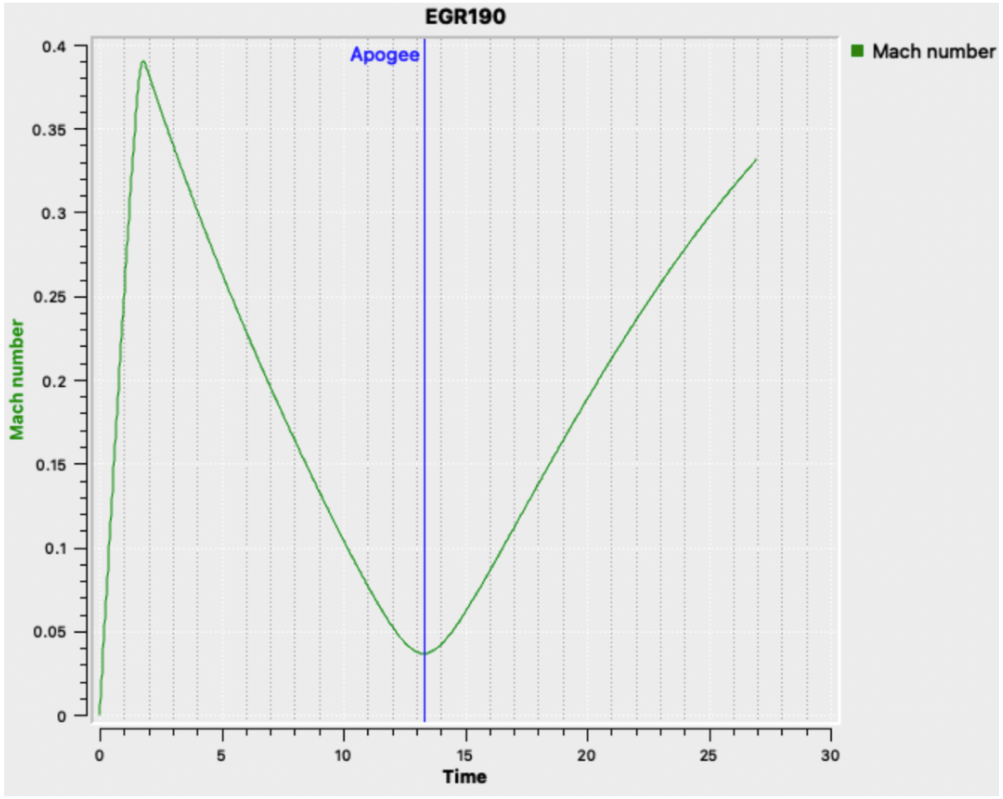
Mach Number vs Time (RockSim)
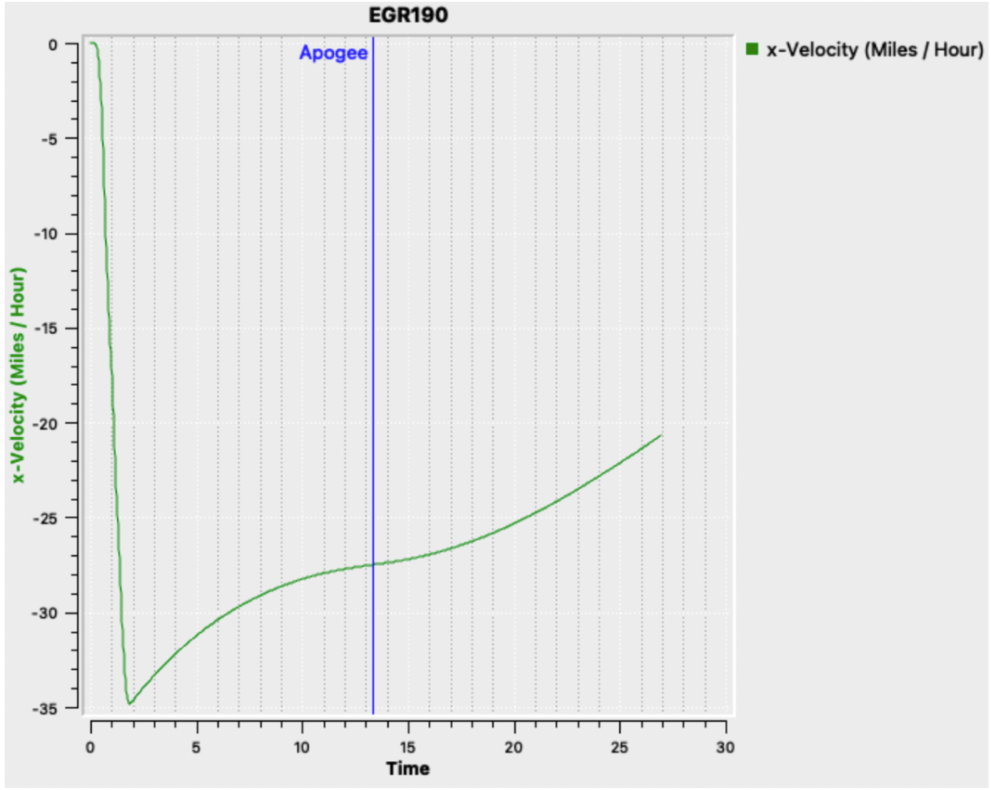
X-Velocity vs Time (RockSim)
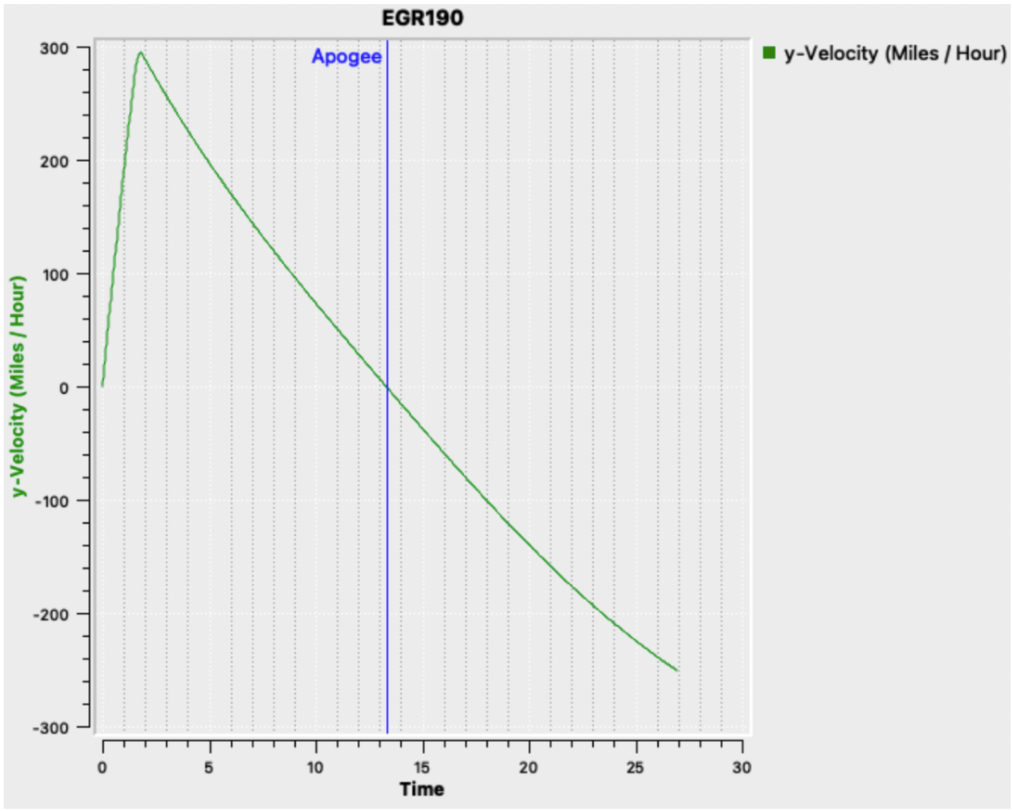
Y-Velocity vs Time (RockSim)
Conclusion
After a successful flight, our measured values were compared with our predictions from RockSim.
According to the RockSim simulated graphs, our group’s rocket was expected to reach an altitude of about 2740 ft, a maximum vertical velocity of 300 mph, and a maximum of Mach number of 0.39. Based on the approximate maximum difference in pressure readings (~1.2psi), the actual maximum velocity and Mach number were recorded to be 263 mph and 0.34 respectively. From our measurements, we can see that the RockSim model over-predicted numbers, although errors can be contributed to errors in sensor placement, pressure difference, and overall inconsistences with a lower-fidelity model. In the future, we would hope to see this project extend to larger model rockets and conduct more precise measurements.
Launch Day Media
